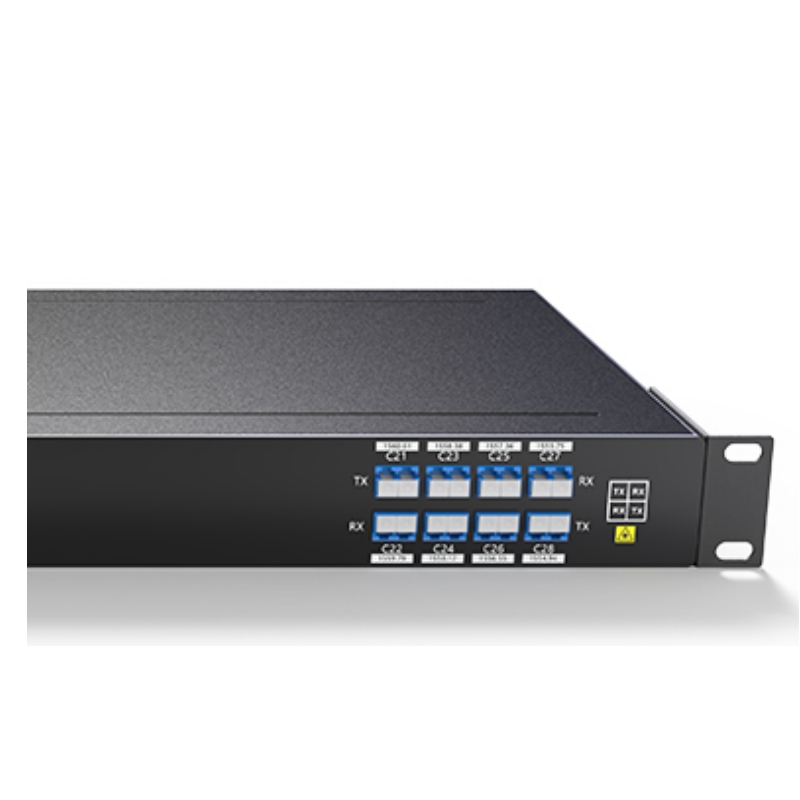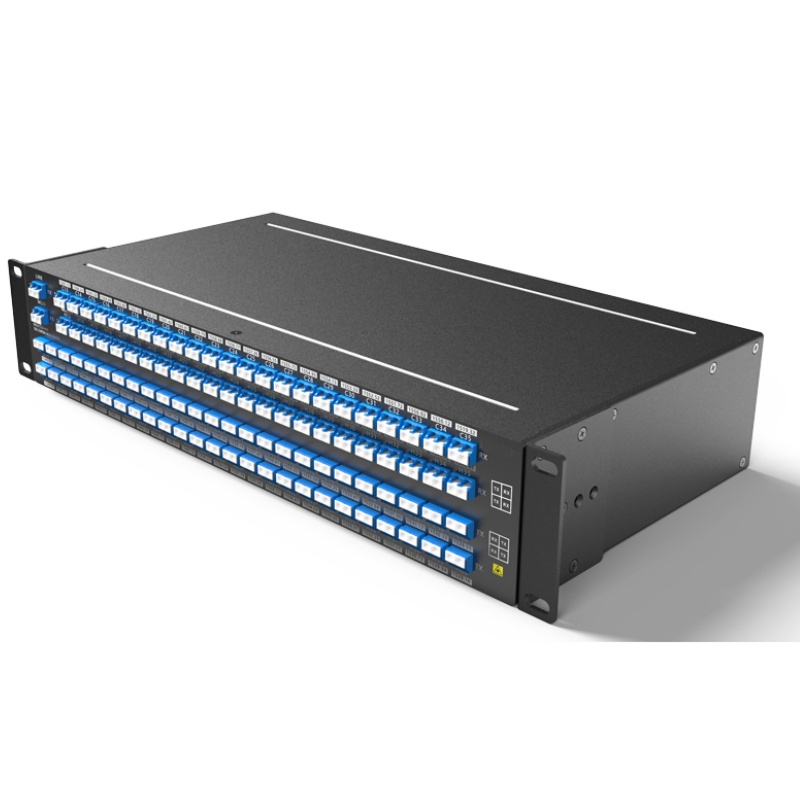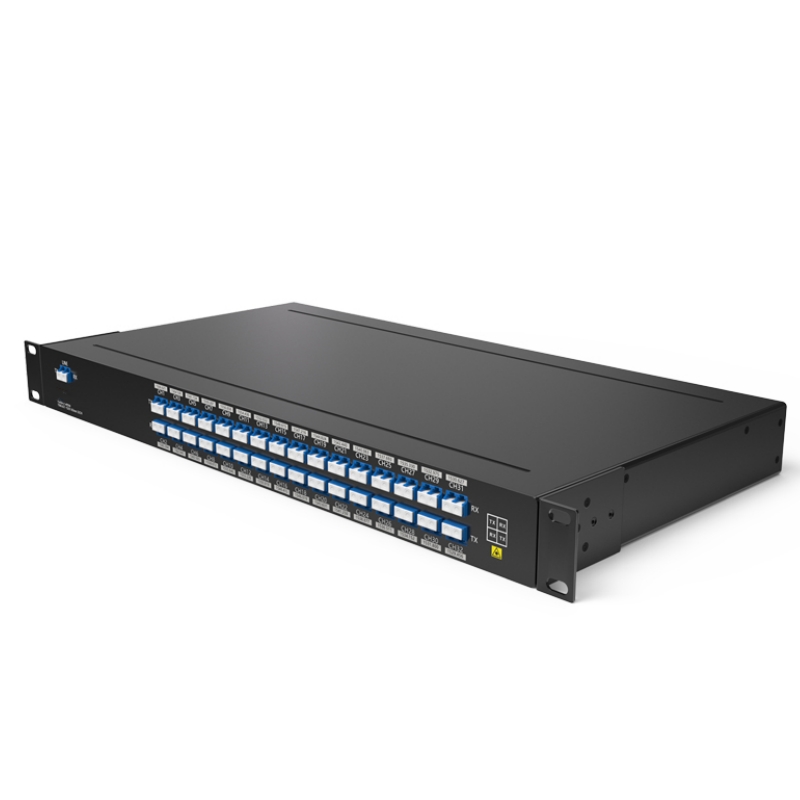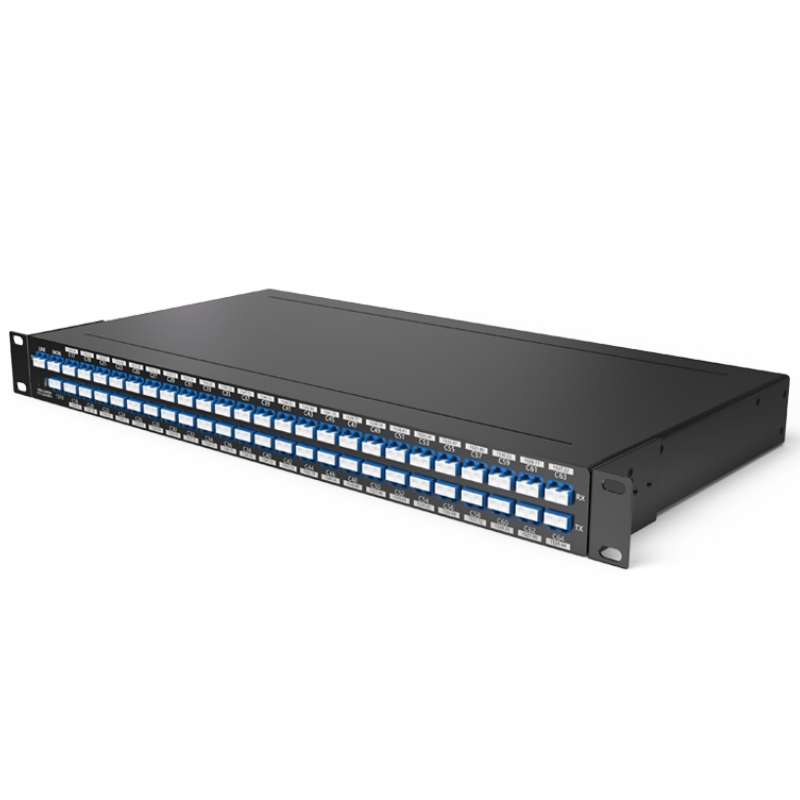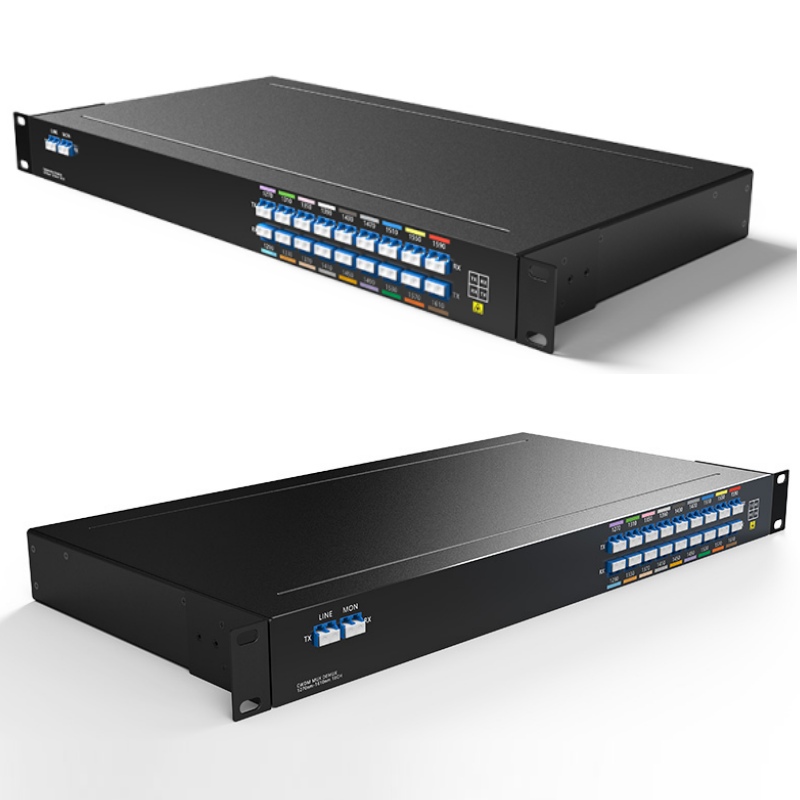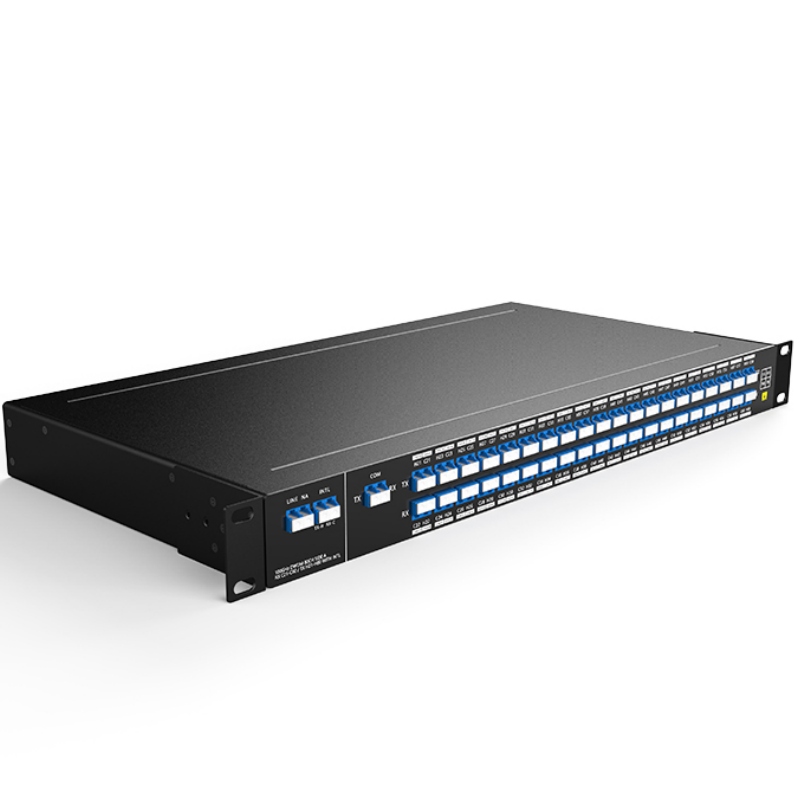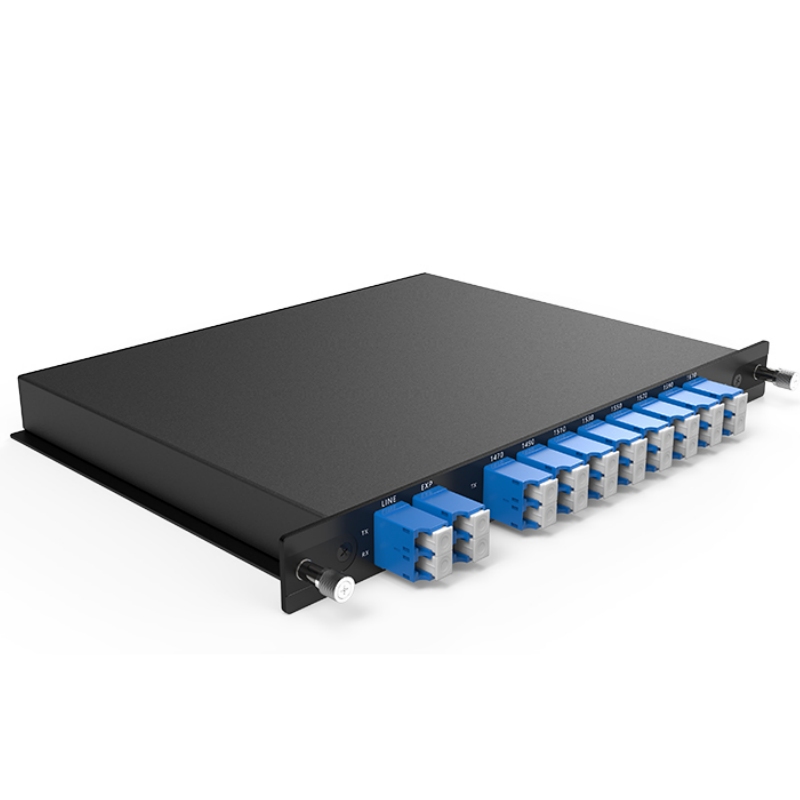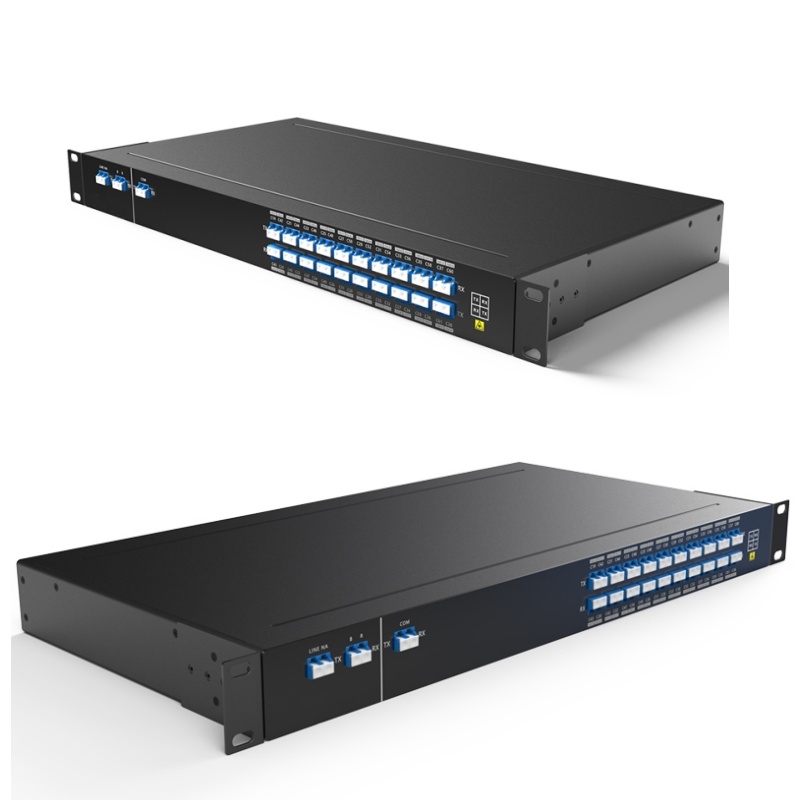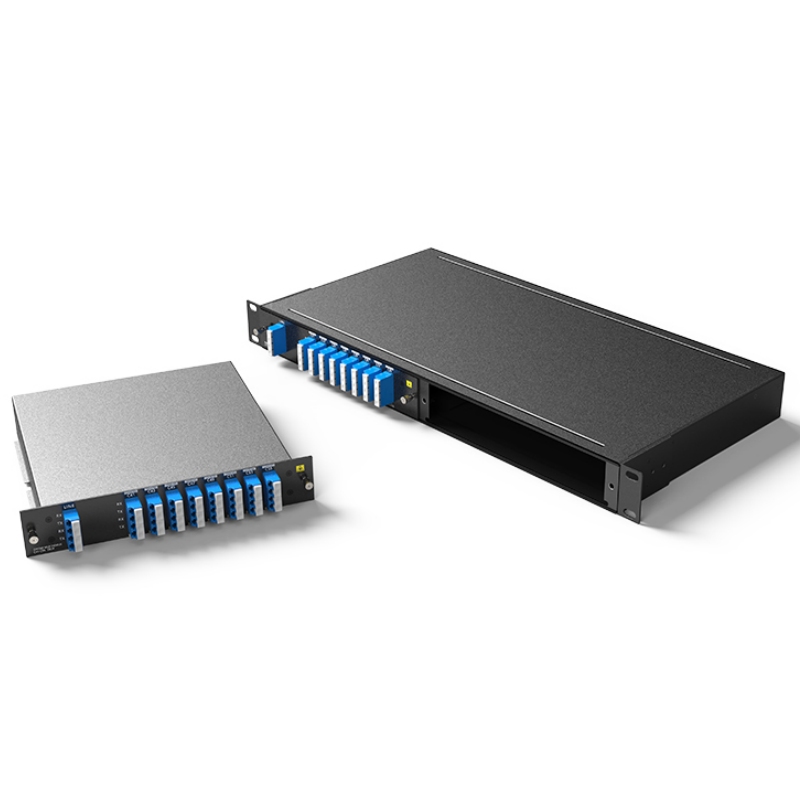WDM Manufacturer in China
In a WDM system, multiple optical signals carrying different data streams are combined at the transmitting end using different wavelengths of light.
These signals are then transmitted over a single optical fiber.
At the receiving end, they are separated and routed to their respective destinations based on their wavelengths.
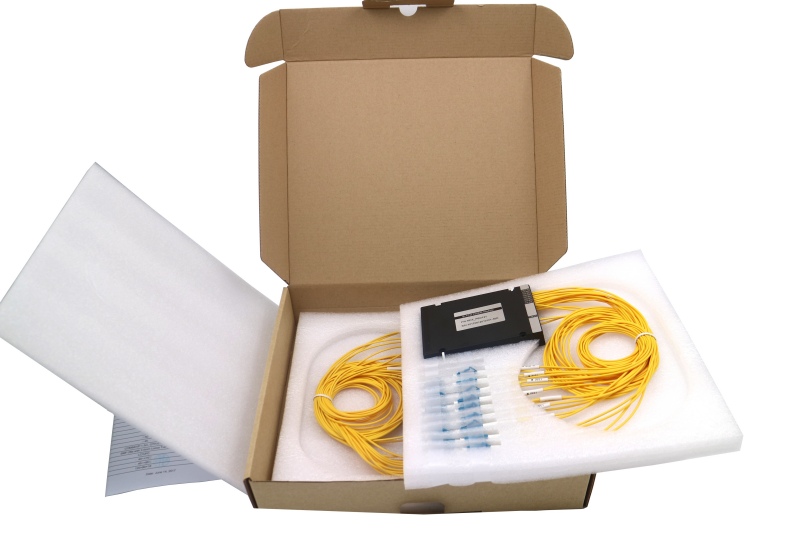
Main Types of WDM
-
Coarse Wavelength Division Multiplexing (CWDM): CWDM uses a relatively wide spacing between wavelengths, typically around 20 nm, allowing for the simultaneous transmission of several signals over a single fiber. It is cost-effective and suitable for short to medium-distance optical communication applications.
-
Dense Wavelength Division Multiplexing (DWDM): DWDM utilizes much narrower wavelength spacing, typically around 0.8 nm or less, enabling a higher number of channels to be transmitted over a single fiber. DWDM systems can support a large number of wavelengths, allowing for high-capacity and long-distance communication.
Why Need WDM For Optical Communication
-
Increased Bandwidth: WDM enables the efficient utilization of the available optical fiber bandwidth by transmitting multiple signals simultaneously. This significantly increases the overall capacity of the fiber.
-
Cost-Effectiveness: By maximizing the use of existing fiber infrastructure, WDM eliminates or reduces the need for laying additional fibers, resulting in cost savings.
-
Scalability: WDM systems are highly scalable, allowing for easy expansion of network capacity by adding more wavelengths or channels as needed.
-
Flexibility: Different types of signals, such as data, voice, and video, can be transmitted concurrently over the same fiber using different wavelengths, providing flexibility and versatility for various communication needs.
-
Long-Distance Transmission: DWDM, in particular, enables long-distance transmission by leveraging the narrow wavelength spacing and the use of optical amplifiers to boost the signals periodically along the fiber.
Embrace the Power of WDM in Fiber Optic Communication
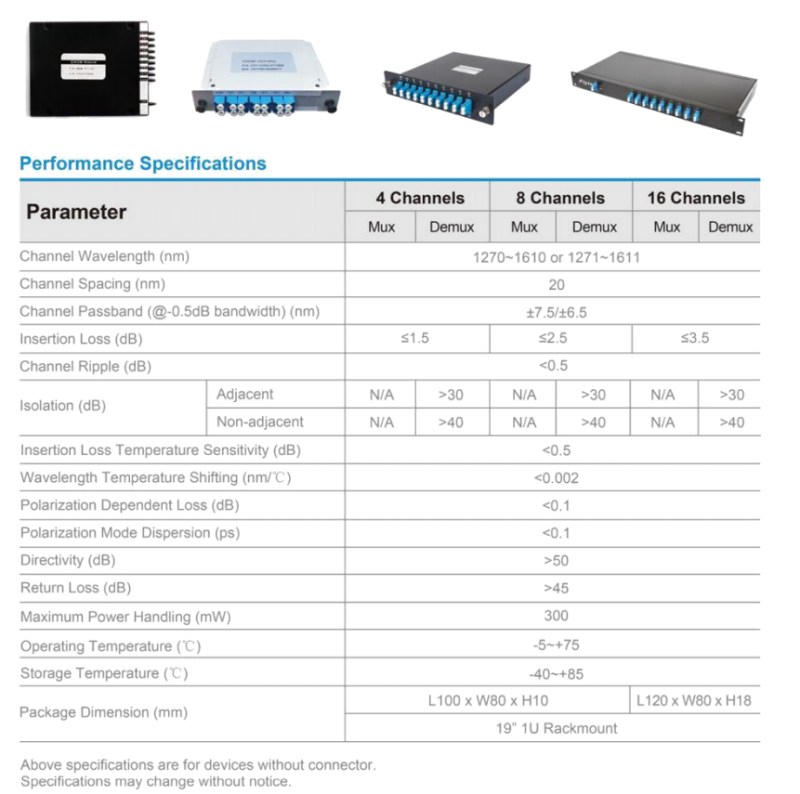
Wavelength Division Multiplexing (WDM) represents a groundbreaking advancement in fiber optic communication.
By harnessing its principles of maximizing bandwidth, cost-effectiveness, scalability, versatility and long-distance transmission, WDM empowers network providers to meet the demands of today's data-driven world.

